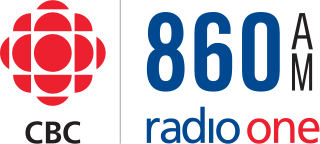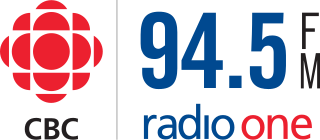| Founded | 1923 |
|---|---|
| Defunct | 1960 |
| Headquarters | Edmonton, Alberta, Canada |
| Services | Radio Network |
The Northwest Territories and Yukon Radio System was a radio service spanning the Northwest Territories and the Yukon, in existence from 1923 until 1959. It was created for easy communication between the towns or outposts and the rest of the country and was disbanded in 1959 when the system stations were taken over by the Department of Transport.

The Northwest Territories is a federal territory of Canada. At a land area of approximately 1,144,000 km2 (442,000 sq mi) and a 2016 census population of 41,786, it is the second-largest and the most populous of the three territories in Northern Canada. Its estimated population as of 2019 is 44,826. Yellowknife became the territorial capital in 1967, following recommendations by the Carrothers Commission.

Yukon is the smallest and westernmost of Canada's three territories. It has the smallest population of any province or territory in Canada, with 35,874 people, although it has the largest city in any of the three territories. Whitehorse is the territorial capital and Yukon's only city.
The NWT&Y Radio System was created in 1923 after the Department of the Interior, realizing the possibilities of wireless telegraphy to cover the vast areas of the northland, requested the Defence Department consider the installation of Army Radio stations to provide a reliable and rapid means of communication. At that time the only means of communication with civilization, or "outside" as it was known, was a limited mail service by boat in summer and dog-team in winter and an unreliable wire telegraph service from Dawson City, YT to Hazelton, BC operated by the Dominion Government Telegraph Service.
The first connection was established between Dawson City and Mayo (both in Yukon), in 1923, by the Royal Canadian Corps of Signals (RCCS). [1] [2] It was the first wireless radio service to offer communications between the North and the rest of Canada. Although originally built to aid in the administration of the North as well as to facilitate commercial development of the area, the radio system exceeded its original intent by providing communities with both a social centre and a lifeline to link isolated northern communities to one another as well as to the rest of the world. [3]

Dawson City, officially the Town of the City of Dawson, is a town in the Canadian territory of Yukon. It is inseparably linked to the Klondike Gold Rush (1896–99). Its population was 1,375 as of the 2016 census, making it the second largest town of Yukon.

Mayo is a village in Yukon, Canada, along the Silver Trail and the Stewart River. The population at the 2016 census was 200, a decrease of 11.5% from the 2011 census. The Yukon Bureau of Statistics speaks of 496 residents as of March 31, 2019, in Mayo. It is also the home of the First Nation of Na-Cho Nyäk Dun, whose primary language is Northern Tutchone. Na-Cho Nyäk Dun translates into "big river people."
The Royal Canadian Corps of Signals (RCCS, RC Sigs; is a component within the Canadian Armed Forces' Communications and Electronics Branch, consisting of all members of that personnel branch who wear army uniform. Prior to 1968 it was a combat support corps of the Canadian Army.
Once established, the system expanded very quickly and, by 1948, there were 23 northern stations in operation. [4] The number of stations varied over the years expanding and contracting in response to commercial and industrial development. [5]
In addition to the radio-telegraph, the system also provided other services to the general public. From 1938 until 1942, under an agreement with Alberta Government Telephones, a radiotelephone service was provided at the following RC Signals stations: Edmonton, McMurray, Fort Smith, Yellowknife and Goldfields. Repeater equipment was installed in the Edmonton Radio Station with connections to the offices of the Alberta Government Telephones from where local or long distance connections were made in the normal manner. At the northern stations, telephone booths were installed and tied in with the HF transmitting and receiving equipment. It was greeted and used enthusiastically by mining and transportation companies particularly as well as the general public, for both business and social calls.
Another service provided by staff at many of the RC Signals stations was a local radio broadcast service that enabled those in the community to listen to news, weather and music. Starting on 1 April 1949 the NWT&Y Radio System started rebroadcasting the full daily program of the CBC (7 a.m.-midnight). A connection was made between the CBC studios in the MacDonald Hotel and the transmitter site of the Edmonton Radio Station which rebroadcast on 8265 Kcs using a 5 kilowatt Marconi TH41 transmitter. At those stations where RC Signals were operating low-power broadcast transmitters for the benefit of their communities, 8265 Kcs was monitored and the CBC programs again re-broadcast on the local standard broadcast frequency. [6]
Starting in the early 1950s, some of the stations were handed over the Department of Transport. By 1960 all the stations had been handed over or closed, signalling the end of the military control of these stations, and the start of the civilian control. The Department of Transport continued to run the telegraph stations for a time and CBC took command of broadcasting their programming to these towns, leading to the creation of CBC North. [7]
CBC Radio is the English-language radio operations of the Canadian Broadcasting Corporation. The CBC operates a number of radio networks serving different audiences and programming niches, all of which are outlined below.

CBC North is the Canadian Broadcasting Corporation's radio and television service in Northern Canada. It began operations in 1958 as the CBC Northern Service with radio broadcasts. It took over CFYK, a community-run station in Yellowknife, Northwest Territories, which began broadcasting in 1948. CFYK had been opened by the Royal Canadian Signal Corps.










